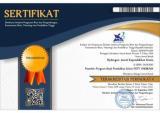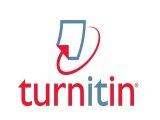Implementation of the PBL-STEM Model to Improve Students' Critical Thinking on Reaction Rate Material
DOI:
https://doi.org/10.33394/hjkk.v11i5.8609Keywords:
PBL-STEM, critical thinking, reaction rateAbstract
The application of PBL-STEM can encourage students to be independent in the learning process and emphasize the process of thinking critically and analytically to seek and find answers to a problem in question. This study used a true–experimental design with the Posttest Only Control Design type. The population in this study were all students of class XI SMA Kristen Sunodia Samarinda for the academic year 2022/2023 divided into 2 classes. This study aims to determine the effect of PBL-STEM in improving students' critical thinking skills. Sampling was done by cluster random sampling technique. The instruments used to measure students' critical thinking skills in chemistry were post-test questions, teacher and student observation sheets, and student response sheets (questionnaire). Data analysis was performed by t-test. The results of the t-test with Mann-Whitney obtained sig. (2-tailed) in both classes is 0.00 <0.05, it is concluded that Ha accepted the statement that there is an effect of the application of PBL-STEM on the critical thinking skills of class XI students at Christian Senior High School Sunodia Samarinda regarding reaction rates. The results of the teacher and student activity sheets in the experimental class were both in very good categories, as well as the student response to PBL-STEM learning, namely 77.2% of students agreed with the application of PBL-STEM in learning which can train students' critical thinking skills. This research discusses the analysis of how effective the influence of PBL and STEM integration is to improve critical thinking skills on reaction rate material so that this research can be used as a reference for applying PBL-STEM to other chemistry topics.
References
Adiwiguna, P., S., Dantes, N., dan Gunamantha, M. (2019). Pengaruh Model Problem Based Learning (PBL) Berorientasi STEM terhadap Kemampuan Berpikir Kritis dan Literasi Sains Siswa Kelas V SD di Gugus I Gusti Ketut Pudja. Jurnal Pendidikan Dasar Indonesia. 3(2), 94-103.
Arung, A. O., Erika, F., & Nurhadi, M. (2022). Guided Discovery Learning Berbasis Indigenous Knowledge untuk Melatih Keterampilan Berpikir Kritis Siswa. SAP (Susunan Artikel Pendidikan), 6(3).
Ariyatun, A., & Octavianelis, D. F. (2020). Pengaruh Model Problem Based Learning Terintegrasi STEM terhadap Kemampuan Berpikir Kritis Siswa. JEC: Journal of Educational Chemistry, 2(1), 33-40.
Baucum, M. N., & Capraro, R. M. (2021). A System for Equity: Enhancing STEM Education During A Pandemic. Journal of Research in Innovative Teaching & Learning, 14(3), 365–377.
Clarissa, D., P., Indarini, D., P., dan Bibin, R. (2020). Problem Based Learning Terintegrasi STEM di Era Pandemi Covid-19 untuk Meningkatkan Keterampilan Berpikir Kritis Siswa. Jurnal IPA dan Pembelajaran IPA. 4(2), 193-204.
Ernawati, H. (2014). Pengaruh Small Group Discussion terhadap Pengetahuan Tentang Dismenore pada Siswa SMPN 1 Dolopo. Jurnal Florence. 7(1), 47-51.
Estapa, A. T. dan Tank, K. M. (2017). Supporting Integrated STEM in The Elementary Classroom: A Professional Development Approach Centered On An Engineering Design Challenge. International Journal of STEM Education. 4(6), 1-16.
Fasha, A. Johar, R dan Ikhsan, M. 2018. Peningkatan Kemampuan Pemecahan Masalah dan Berpikir Kritis Matematis Siswa Melalui Pendekatan Metakognitif. Jurnal Didaktik Matematika, 5(2), 53–64.
Fraenkel, J. R., Wallen, N. E., & Hyun, H. H. (2012). How To Design and Evaluate Research in Education (Vol. 7, p. 429). New York: McGraw-hill.
Laforce, M., Priatmoko, S., and Blackwell, C. (2017). Problem-Based Learning and Student Interest in STEM Careers: The Roles Of Motivation and Ability Beliesfs. Education Sciences. 4(92), 21-22.
Lita, T. M., Warsono, dan Toto. (2019). Pengaruh Model Problem Based Learning Berbasis STEM Terhadap Penguasaan Konsep dan Kemampuan Berpikir Kritis Siswa. 7(2), 1-8.
Marlina, D., Kapur, K. S., Azzahra, N. I., & Desnita, D. (2021). Meta Analisis Pengaruh Penggunaan LKS terhadap Keterampilan Berpikir Kritis Siswa SMA Dalam Pembelajaran Fisika. Jurnal Pendidikan Fisika UNDIKSHA, 11(2), 1–8.
Mayasari, T., Kadarohman, A., Rusdiana, D., & Kaniawati, I. (2016). Apakah Model Pembelajaran Problem Based Learning dan Project Based Learning Mampu Melatihkan Keterampilan Abad 21?. Jurnal Pendidikan Fisika Dan Keilmuan (JPFK), 2(1), 48-55.
Munirotus, S., Siti, S., dan Buchori, M. (2020). Pemanfaatan Multimedia Interaktif pada Materi Hidrokarbon untuk Menumbuhkan Keterampilan Berpikir Kritis Siswa. Jurnal Inovasi Pendidikan IPA. 6(2), 184-194.
Nasihah, E. D., Supeno, S., & Lesmono, A. D. (2019). Pengaruh Tutor Sebaya Dalam Pembelajaran Problem Based Learning terhadap Keterampilan Berpikir Kritis Fisika Siswa SMA. Jurnal Pendidikan Fisika, 8(1), 44–57. https://doi.org/10.24127/jpf.v8i1.1899
Nugraha. 2017. Analisis Kemampuan Berpikir Kritis Ditinjau dari Keterampilan Proses Sains dan Motivasi Belajar melalui Model PBL. Jurnal Pendidikan Dasar, 6(1), 35–43.
Octafianellis, D. F., Sudarmin, S., Wijayanti, N., & Panca, H. (2021). Analysis of Student’s Critical Thinking Skills and Creativity after Problem-Based Learning with STEM Integration. Journal of Science Education Research, 5(1), 31-37.
Purnamasari, D., & Utomo, S. B. (2020, April). Analysis of STEM-PBL Based E-Module Needs to Improve Students’ Critical-Thinking Skills. In Journal Of Physics: Conference Series (Vol. 1511, No. 1, p. 012096). IOP Publishing.
Putri, C. D., Pursitasari, I. D., & Rubini, B. (2020). Problem Based Learning Terintegrasi STEM di Era Pandemi COVID-19 untuk Meningkatkan Keterampilan Berpikir Kritis Siswa. Jurnal IPA & Pembelajaran IPA, 4(2), 193–204.
Reza, E. N., Tri, A., dan Vera D. S. (2020). Efektivitas Model PBL Berbasis STEM Terhadap Prestasi Belajar Ditinjau Dari Berpikir Kritis Matematis pada Peserta Didik Kelas XI SMA. Konferensi Ilmiah Pendidikan Universitas Pekalongan. 1(1), 131-135.
Rika, W. S. (2018). Implementasi Pendekatan STEM (Science, Technology, Engineering and Mathematics) untuk Meningkatkan Keterampilan Berpikir Kritis Sekolah Dasar. Primaria Educationem Journal. 1(2), 113- 119.
Rohman, Suherman, dan Utami. (2021). Penerapan Problem Based Learning Berbasis STEM pada Materi Alat Optik untuk Meningkatkan Kemampuan Berpikir Kritis Peserta Didik. Jurnal Penelitian Pembelajaran Fisika. 12(2), 117-123.
Santoso, A. dan Arif. (2021). Efektivitas Model Inquiry dengan Pendekatan STEM Education Terhadap Kemampuan Berpikir Kritis Peserta Didik. Jurnal Tadris IPA Indonesia. 1(2), 73-86.
Setyorini, R. A., Permanasari, A., & Ardianto, D. (2021). Problem-Based Learning with Science, Technology, Engineering, and Mathematics (STEM) Approach to Improve Critical Thinking Skills and Conceptual Understanding of Junior High School Students. JSEP (Journal of Science Education and Practice), 5(2), 54-73.
Wahdaniyah, N., Agustini, R., & Tukiran, T. (2023). Analysis of Effectiveness PBL-STEM to Improve Student’s Critical Thinking Skills. IJORER: International Journal of Recent Educational Research, 4(3), 365-382.
Yana, S., & Yusrizal, Y. (2022). Application of Problem Based Learning (PBL) Model to Improve Problem Solving Skill from Critical Thinking Skill Students on Dynamic Fluid Materials. Jurnal Penelitian Pendidikan IPA, 8(2), 521-527.
Downloads
Published
How to Cite
Issue
Section
Citation Check
License
License and Publishing Agreement
In submitting the manuscript to the journal, the authors certify that:
- They are authorized by their co-authors to enter into these arrangements.
- The work described has not been formally published before, except in the form of an abstract or as part of a published lecture, review, thesis, or overlay journal.
- That it is not under consideration for publication elsewhere,
- That its publication has been approved by all the author(s) and by the responsible authorities – tacitly or explicitly – of the institutes where the work has been carried out.
- They secure the right to reproduce any material that has already been published or copyrighted elsewhere.
- They agree to the following license and publishing agreement.
Copyright
Authors who publish with Hydrogen: Jurnal Kependidikan Kimia agree to the following terms:
- Authors retain copyright and grant the journal right of first publication with the work simultaneously licensed under a Creative Commons Attribution License (CC BY-SA 4.0) that allows others to share the work with an acknowledgment of the work's authorship and initial publication in this journal.Â
- Authors are able to enter into separate, additional contractual arrangements for the non-exclusive distribution of the journal's published version of the work (e.g., post it to an institutional repository or publish it in a book), with an acknowledgment of its initial publication in this journal.
- Authors are permitted and encouraged to post their work online (e.g., in institutional repositories or on their website) prior to and during the submission process, as it can lead to productive exchanges, as well as earlier and greater citation of published work.
Licensing for Data Publication
Hydrogen: Jurnal Kependidikan Kimia uses a variety of waivers and licenses, that are specifically designed for and appropriate for the treatment of data: Open Data Commons Attribution License, http://www.opendatacommons.org/licenses/by/1.0/ (default) Other data publishing licenses may be allowed as exceptions (subject to approval by the editor on a case-by-case basis) and should be justified with a written statement from the author, which will be published with the article.










